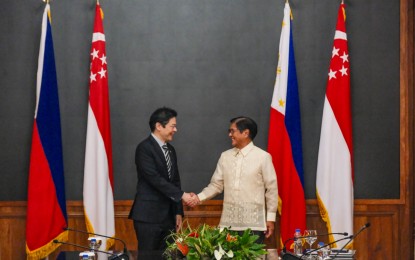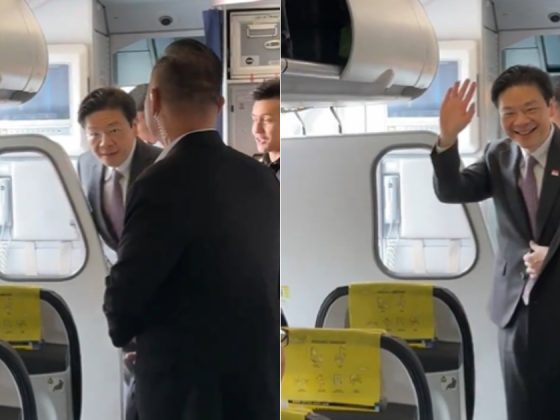How long can a migrant-driven city like Singapore be sustained with closed borders?
“This is all around us and the waves are going to take many many months, and maybe more than a year or two to settle. And we in Singapore are watching our dykes, trying to keep ourselves safe and preventing any of this from coming in, and having a situation that goes out of control.”
These were the words of Singapore Prime Minister Lee Hsien Loong on 27 March during a televised speech.
The analogy of a tide, used by the Prime Minister to describe the situation of the city-state in the context of the global pandemic, has been mobilised to justify the self-isolation that was introduced at the end of March in the wake of a hike of imported cases. This drastic measure appears at odds with the foundation of Singapore’s model as a hub for trade and migration. How did Singapore resort to this approach and what challenges does this represent for its future?
The first wave and the “Singapore model”
In early April, Singapore still appeared to be in a privileged situation as a significant proportion of the world’s population had been locked down. Most schools were open, people were still allowed to move around freely, go to restaurants, libraries, museums, and to work. Yet, the city-state recorded its first case of the coronavirus originating from Wuhan as early as 23 January, and saw a worrying surge of local infections in early February, while the rest of the world still watched calmly the developments of the epidemic.
Singapore managed to maintain this first wave under control, and as an alarming situation was emerging in Europe by the end of February, Singapore was recording only few cases. Quickly, all eyes turned to the “Singapore model”. Journalists and politicians around the world looked at its strategy of mass testing, effective isolation of positive patients, its extensive contact tracing and quarantining of people having had relations with confirmed cases.
The 2003 SARS epidemic in Singapore was a highly traumatic experience. In addition to the 33 deaths, it significantly disrupted the economy and the daily life of the Singapore population. The lessons learned from mistakes, and the preparation plans developed and refined afterwards, allowed for a sophisticated response mechanism against this new coronavirus.
The second wave, an unprecedented scenario
In March, as the outbreak became a global pandemic, Singapore reported many imported cases, which created a totally new situation. While SARS initially came from a Singaporean traveller who had contracted the disease in a hotel in Hong Kong, infections had been essentially local. Out of 238 cases, only 8 were imported (slightly more than 3%). By the end of March, over 54% of the 926 Covid-19 patients in Singapore had been infected outside of its borders. As a result, the city-state introduced border control measures that were unimaginable a few weeks before, virtually cutting the global city from the rest of the world.
In 2003, the airlines were required to conduct health screening and to request doctors certifications from passengers appearing unwell. On arrival, travellers had to complete a health declaration, and temperature screenings were introduced. Health Advisory cards were handed out to travellers from SARS affected areas. Outbound travellers from Singapore were advised not to travel to countries with local infections.
But the current outbreak has generated new challenges. Due to the large proportion of asymptomatic cases, and the length of the incubation period, identifying cases upon arrival has proven difficult. The set up of temperature screening at all checkpoints from the end of January, and even the multiplication of swab tests in March has not prevented the surge of imported cases.
Setting up the dykes
The restrictions on travel and controls at the borders were stepped up gradually. They have been pragmatically adjusted along with the evolutions of the epidemic.
On 28 January, the Ministry of health announced that people coming from Hubei, the Chinese region, which, at the time, concentrated 95% of recorded cases, would be put in quarantine for fourteen days. Just two days later, people coming from other parts of Mainland China were put on “Leave of Absence” for the same duration. They were not allowed to show up for work, but could still go out of their home to buy food or other basic activities. As the monitoring of these measures started to represent a logistical challenge, from 7 February, work pass holders had to request a prior approval from the Ministry of Manpower before flying to Singapore.
Ten days later, as the number of infections in China had reached 12 000, Singapore’s Multi-Ministry Taskforce increased restrictions by introducing the “Stay-Home Notice” (SHN) whereby visitors or residents returning to Singapore from mainland China, had to remain in their place of residence at all times during the 14-day period. Afterwards, these restrictions were gradually expanded to newly affected countries, following the developments of the epidemic: Daegu and Cheongdo, Korea on 25 February, Iran, northern Italy, Japan and the whole of South Korea on 3 March.
As it had become clear by that point that the world was heading towards a global pandemic, the official statement was that Singapore was bound to be affected again: “we will be exposed to new waves of infection, and increasingly it will not be possible to stop the virus at our borders. We also cannot isolate Singapore and shut ourselves from the world.” This unusual tone for a Ministry of Health press release reflects the dilemma of the Singapore border control strategy. But the closing down of the city-state’s borders eventually took place twenty days later, after a surge of imported cases. By 23 March, short-term visitors and work pass holders were no longer allowed in, unless they worked in essential service sectors, like healthcare and transport.
The future of the Singapore hub city model
So far, a large part of foreign workers seem to feel relatively privileged considering the worsening situation of their home countries. But evidence shows that migrants have been particularly impacted by the measures taken to tackle different aspects of the pandemic. By the end of March, 89 work passes had been revoked either for not obtaining prior approval before coming back from abroad, or for breaching SHNs. Besides, public officers were mandated to look out for migrants meeting up in public spaces, dispersing them and cordoning off green areas where they would usually gather on their rest days.
Like elsewhere in the world, Singapore’s response to the pandemic is before all a national one. It aims to protect citizens from an external threat. But this situation is particularly challenging to a city like Singapore, whose model relies on its situation as a regional and global hub, and therefore, on openness and freedom of circulation. In fact, many foreigners are involved in the response to the current health crisis, from nurses, to medical scientists and public health experts. How long can this model be sustained with closed borders? Many workers, citizens, entrepreneurs and policy-makers are asking themselves this question.
Republished from openDemocracy.










